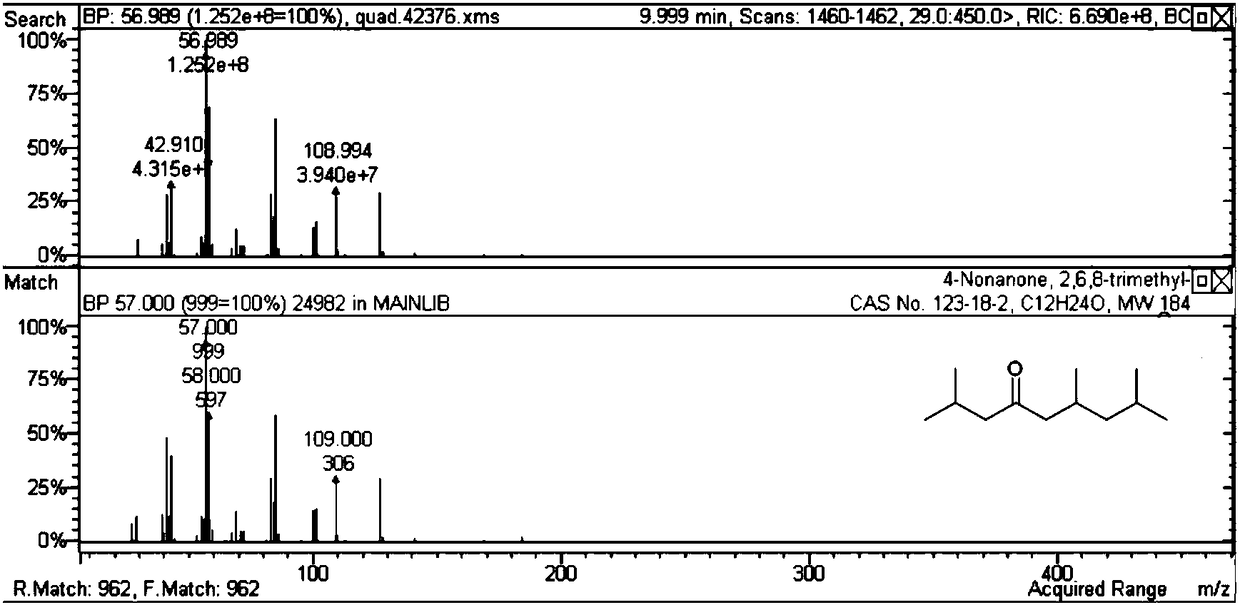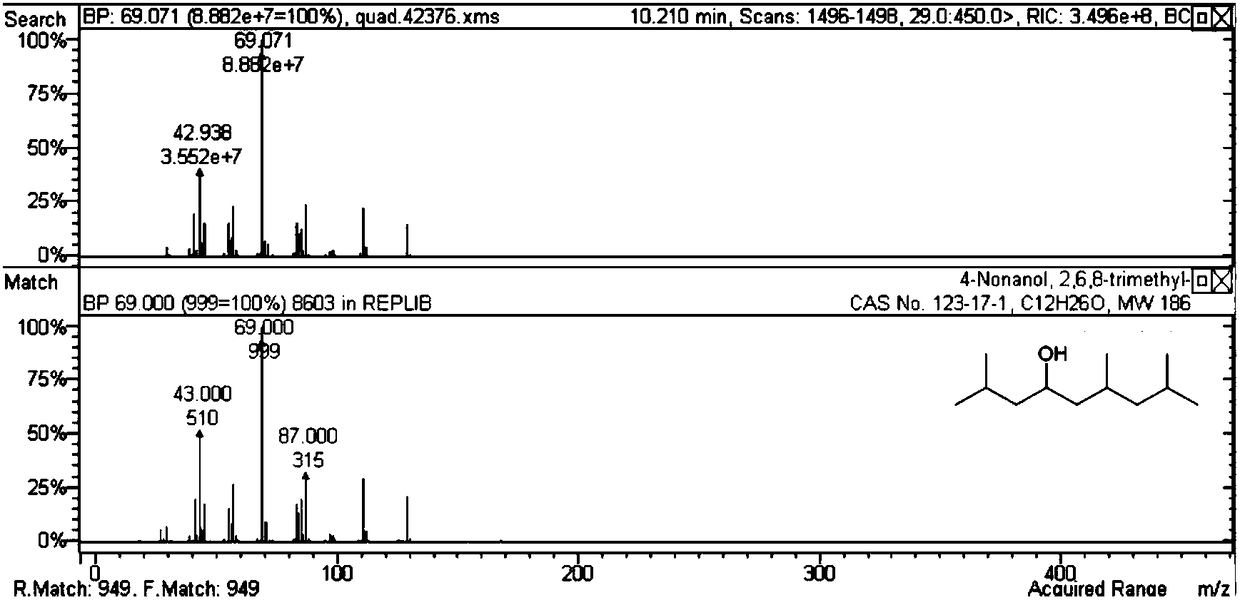Preparation method of reproducible dodecanol and branched paraffin in range of aviation kerosene
A technology of aviation kerosene and branched alkanes, which is applied in the preparation of liquid hydrocarbon mixtures, chemical instruments and methods, and the preparation of organic compounds, and can solve the problem of high cost
- Summary
- Abstract
- Description
- Claims
- Application Information
AI Technical Summary
Problems solved by technology
Method used
Image
Examples
Embodiment 1-14
[0028] 1. Preparation of catalyst:
[0029] 1) Preparation of solid acid catalysts: Nafion and Amberlyst resins, Y-type molecular sieves, montmorillonite K-10 and KSF are commercial catalyst products purchased directly.
[0030] Phosphorylated zirconium oxide (ZrP) catalyst is mixed with 1mol / L zirconium oxychloride and ammonium dihydrogen phosphate aqueous solution at a volume ratio of 2:1, and the obtained precipitate is washed and filtered repeatedly, dried at 120°C for 10 hours, and then placed in Calcined at 400°C for 4h.
[0031] 2) Preparation of solid base catalysts: Alkaline earth oxides (MgO, CaO, SrO) and rare earth oxides (La2O3, CeO2) were obtained by calcining the corresponding nitrates under N2 atmosphere for 8h, respectively.
[0032] Magnesium-aluminum hydrotalcite is to dissolve 0.093mol Mg(NO3)2·6H2O and 0.0465molAl(NO3)3·9H2O in 100ml of water, add 0.219mol NaOH and 0.0565mol Na2CO3 to the solution in a water bath at 70°C in 100ml of aqueous solution dropw...
Embodiment 13
[0043] Sedimentation and precipitation method: Prepare 0.0175M nickel nitrate solution and divide it into two parts A and B in equal volume. Add silica, H-ZSM-5, H-MOR, silicon-aluminum composite carrier, H-β molecular sieve, oxidation One kind of aluminum and an appropriate amount of concentrated nitric acid, 0.0525M urea was added to B, B was slowly added dropwise to A in a water bath at 80°C, the temperature was raised to 90°C, stirred for 10 hours, filtered and washed, dried overnight at 80°C, and air roasted at 500°C for 2 hours. The calcined catalyst was reduced in situ with hydrogen at 500 °C for 2 h in a fixed bed. (see table 1, embodiment 14-18)
Embodiment 14-18
[0044] Table 1 Supported metal A / X type bifunctional catalyst
[0045]
[0046]
[0047] 2 Self-condensation reaction: In a fixed-bed reactor, put 1.0g of catalyst into the reaction tube, keep the hydrogen pressure in the reactor at 0.6MPa, and the hydrogen flow rate at 150mL / min. mL / min was pumped into the reactor. The reaction results are shown in Table 2 and Table 3.
[0048] Table 2 Propylene oxide self-condensation reaction result
[0049]
[0050] As can be seen from Table 2, solid acid and basic catalysts without metal doping are not ideal for the self-polymerization reaction of propylene glycol. When doping noble metals on acid or base catalysts (Example 19-35), dodecyl ketones and alcohols can be generated. Among them, the activity is better when the magnesium aluminum hydrotalcite doped with Pd.
[0051] Table 3 Self-condensation reaction target product structural formula
[0052]
PUM
 Login to View More
Login to View More Abstract
Description
Claims
Application Information
 Login to View More
Login to View More - R&D
- Intellectual Property
- Life Sciences
- Materials
- Tech Scout
- Unparalleled Data Quality
- Higher Quality Content
- 60% Fewer Hallucinations
Browse by: Latest US Patents, China's latest patents, Technical Efficacy Thesaurus, Application Domain, Technology Topic, Popular Technical Reports.
© 2025 PatSnap. All rights reserved.Legal|Privacy policy|Modern Slavery Act Transparency Statement|Sitemap|About US| Contact US: help@patsnap.com



